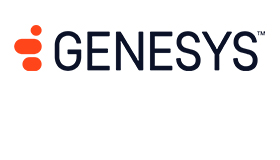Tony Bates and Dr. Peter Graf at Genesys explores how artificial intelligence (AI) influences and enables Experience Orchestration and define six levels of Experience Orchestration evolution.
Experience Orchestration is the creation, delivery and optimisation of customer and employee experiences using communications and software technology.
The levels provide a common foundation for organisations to discuss their vision of the future and how Experience Orchestration will shape their systems, policies and processes going forward.
Introduction
The purpose of Experience Orchestration is to achieve two objectives at the same time:
- Reduce the cost of operations.
- Increase customer loyalty for long-term growth.
Experience Orchestration targets this opportunity by creating efficient, effective and empathetic customer and employee experiences.
Experience Orchestration is accelerated by conversational, predictive and generative AI, which enables the automation, augmentation and continuous optimisation of previously static and inefficient experiences.
As new innovations emerge, we’re heading toward universal orchestration – transcending customer-facing activities across the front- and back-office – enabling organisations to reimagine the contact centre, customer and employee experiences, and their business overall.
We define the levels of Experience Orchestration as follows.
Level 0 – Zero Orchestration
Without orchestration, customers have little hope of quickly and easily resolving product or service issues. Customers reach out to a company by phone, but they are often greeted with a busy signal and forced to make multiple attempts before reaching someone who can help.
At Level 0, human agents handle all interactions manually, relying on their training and expertise. Often, the result is inconsistent and inefficient service and, for the customer, an unfulfilling experience. At this level, customer service is an afterthought.
The employee experience is largely unmanaged. The result is high levels of customer and employee attrition, and sub-par business results.
Level 1 – Menu-Based Navigation
The most basic level of orchestration uses Interactive Voice Response (IVR) and call routing technologies. Customers call into a single phone number and use their phone dial pad or simple voice input (speech-to-text technology) to select from a menu of options.
Very simple interactions can be automated, including account activation/authentication/lookups, delivery tracking, survey responses, and opting in or out of an offer.
While IVR eliminates the busy signal for many customers, the wait remains. Based on demand, the wait can balloon to ridiculous, hours-long wait times – even if customers opt for an automated callback.
While Level 1 offers some customer self-service through IVRs, most interactions usually involve a human agent.
Agents are assigned to work on specific queues of callers and are supported by systems that automatically display basic customer information and some historic customer data, marginally reducing the average handling time per call.
Scheduling is automated and, like routing, relies on information about agents’ skills which are maintained through dedicated skills management. Calls are recorded and manually sampled by supervisors to ensure quality customer service.
The quality of the customer experience is usually measured using Net Promoter Scores.
Level 2 – Predefined Dialog Automation
This is the level at which most vendors and organisations are operating today. Level 2 introduces natural language-enabled automation of routine dialogs across all channels, including voice, text, chats or social apps.
Examples of these dialogs include order management, scheduling, returns management and address changes.
Although dialog engines, bots and conversational AI provide more flexibility than IVRs, human agents still stand ready to take over at any time.
Automation is limited, and reliable customer service levels usually happen during normal business hours only. Dialog automation usually requires triggering a lookup or transaction in a backend system, which is achieved through APIs, Robotic Process Automation or workflows.
Some companies achieve good levels of customer self-service with predefined dialog automation, but typically more than half of all interactions still land in the contact centre with the usual wait times for customers.
When interacting with customers, agents are assisted by systems that monitor the conversation and present relevant knowledge articles and information in the moment, which cuts average handle time (AHT).
Predictive AI technologies for engagement (when and how to reach out to a customer) or routing (with which agent or bot to match a customer that will produce the best business outcome) further optimise business performance.
Agents work in the office, remotely, or in hybrid models while automated quality assurance covers 100% of all interactions.
Gamification keeps agents engaged even when they are not in the same location as their supervisors. AI is used to accelerate forecasting and scheduling.
Experience quality is typically measured with Voice of the Customer or Voice of the Employee surveys.
Level 3 – System-Generated Conversations
Level 3 makes heavy use of large language models and generative AI. The system generates conversations for many use cases with next best actions determined based on customer or employee context.
By determining next-best actions, the system dynamically adjusts to the situation and overcomes older, more rigid approaches.
Virtual agents handle more challenging use cases like product inquiries, up-selling/cross-selling, troubleshooting and multistep approvals.
Unlike bots, virtual agents leave an interaction exactly as a human agent would, including summarising the conversation, creating the right wrap-up code and updating back-end systems. Virtual agents are also capable of more natural and flexible conversations.
For nuanced or complex use cases, the system seamlessly transitions from virtual agents to human agents with copilots increasing human agent efficiency through content generation. Copilots propose to human agents the next statement in a conversation, summarise the conversation or create a wrap-up code, for example. They also provide real-time coaching and formulate personalised training plans.
The customer experience is “channel-less,” meaning the experience will be consistent no matter the channel the customer chooses to interact with the business and even if they switch channels within an experience.
Continuous, intraday forecasting and scheduling deliver new levels of flexibility and resilience to organisations and consistent service levels to customers.
KPIs of the business are optimised using journey management (gathering events from across customer and employee experiences) and through work automation.
The latter allows for more efficient task routing to appropriate functions across an organisation. An example is the seamless approval of a loan by an expert in the back office.
These innovations deliver new business value compared to Level 2. We estimate that more than half of interactions can now be handled consistently by automation, while agent copilots further reduce AHT and increase first-contact resolution.
Customer and employee attrition are reduced as customers are encouraged to connect with companies however and whenever is most convenient for them, driving up the overall number of interactions hitting an organisation.
Customer issues are resolved faster, and they’re much more likely to continue doing business with the organisation in the future.
At Level 3, experience quality scores are predicted based on the conversation rather than measured through a post-interaction survey.
Level 4 – Empathetic Experience Generation
At Level 4, empathy takes centre stage. AI is used to understand the customer’s history and context, their problem and emotional state, acknowledge the situation, and generate an experience that resolves the issue.
Empathetic virtual agents handle most customer inquiries – even complex cases like invoice issues, discussions about warranty coverage and handling claims management.
Unlike Level 3, where experiences are driven by next-best actions, at Level 4, AI provides an action model that generates a strategy and an end-to-end experience to address an individual customer’s needs.
These action models pave the way for some use cases to be handled asynchronously by the system. In these cases, a customer does not need to stay involved in an interaction but instead can focus on other things while the system autonomously achieves a desired outcome.
Customers share their experience preferences explicitly, and their emotions are understood by the system. As a result, personalised customer self-service for most use cases is available 24 hours a day, 7 days a week, with no busy signals, no callbacks and no coordinating schedules around a company’s business hours.
Human agents handle only highly complex or emotionally charged interactions, assisted by emotionally aware AI copilots capable of interpreting differences in verbal and facial expressions and tone. This is especially relevant as video becomes an additional, more prominent channel.
The generation and delivery of empathetic experiences autonomously by virtual agents is groundbreaking.
Most interactions in Level 4 do not involve a human agent. Because of emotionally aware AI copilots, organisations may choose to empower knowledge workers and specialists to handle a small fraction of interactions directly, for example, because a business decision requires a specific approval threshold.
Copilots guide agents and knowledge workers through the flow of customer interactions and related actions, requiring only minimal training for those employees. In fact, interacting with customers becomes so simple that gig workers and outsourcers can more easily augment the workforce.
Copilots also provide agents instant translation of any language, creating unprecedented levels of flexibility for global brands and offshoring.
Customer and employee attrition levels are further improved as more efficient, effective and empathetic experiences become available.
At Level 4, the quality of the experience no longer is predicted but rather measured based on customer and employee emotions identified by the system.
Level 5 – Universal Orchestration
At Level 5, Experience Orchestration transcends customer-facing activities across the front- and back-office, enabling organisations to reimagine the contact centre, customer and employee experiences, and their business overall.
The system autonomously generates experiences for all use cases, even highly complex ones like proactive alerting and preventive action, negotiation and disputes, complaints, and consultative selling.
Universal orchestration is self-optimising. AI is used to continuously optimise experience outcomes, convenience and empathy.
Self-learning virtual agents create training materials for other virtual agents and copilots or produce customer-facing documents while anticipating when and where interactions might be necessary and schedule them.
The system automatically selects the right models and when to train them to minimise the environmental impact of the required calculations.
Customers and knowledge workers interact with the system using a human-like, virtual personal concierge that enables them to asynchronously engage in a hyper-personalised experience (“Please get this resolved and confirm when you’re done”), including “bot-to-bot” communication for asynchronous connectivity and ad-hoc system interaction.
In fact, reaching out to a company becomes so easy and convenient that interaction numbers continue to rise. Dedicated devices and wearables complete the feedback loop, as behavioral data and biometrics are gathered to measure empathy levels and drive system decisions in real time.
Universal orchestration elevates an organisation to the highest levels of efficiency, effectiveness and empathy. Human agents no longer interface with customers. Knowledge workers, supported by copilots, engage with customers directly only in the very rare case when AI can’t resolve an issue.
The use of Level 5 Experience Orchestration does not stop with interactions between customers and organisations.
Employees all over the organisation start using virtual personal concierges to become more efficient, effective and empathetic in their daily work.
As a result, Level 5 Experience Orchestration helps achieve new levels of customer and employee loyalty, and we estimate attrition rates are cut significantly from current levels.
This blog post has been re-published by kind permission of Genesys – View the Original Article
For more information about Genesys - visit the Genesys Website
Call Centre Helper is not responsible for the content of these guest blog posts. The opinions expressed in this article are those of the author, and do not necessarily reflect those of Call Centre Helper.
Author: Genesys
Reviewed by: Jo Robinson
Published On: 5th Nov 2024
Read more about - Guest Blogs, Genesys






 Genesys empowers more than 8,000 organisations in over 100 countries to improve loyalty and business outcomes by creating the best experiences for their customers and employees. Through Genesys Cloud, the AI-Powered Experience Orchestration platform, Genesys delivers the future of CX to organisations of all sizes so they can provide empathetic, personalised experience at scale. As the trusted platform that is born in the cloud, Genesys Cloud helps organisations accelerate growth by enabling them to differentiate with the right customer experience at the right time, while driving stronger workforce engagement, efficiency and operational improvements.
Genesys empowers more than 8,000 organisations in over 100 countries to improve loyalty and business outcomes by creating the best experiences for their customers and employees. Through Genesys Cloud, the AI-Powered Experience Orchestration platform, Genesys delivers the future of CX to organisations of all sizes so they can provide empathetic, personalised experience at scale. As the trusted platform that is born in the cloud, Genesys Cloud helps organisations accelerate growth by enabling them to differentiate with the right customer experience at the right time, while driving stronger workforce engagement, efficiency and operational improvements. 










